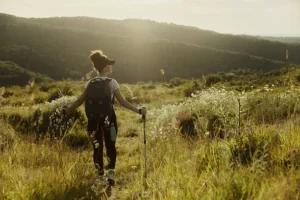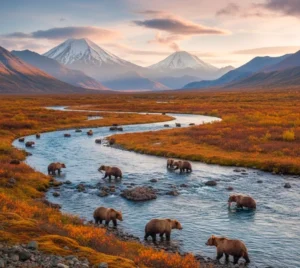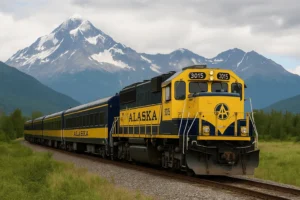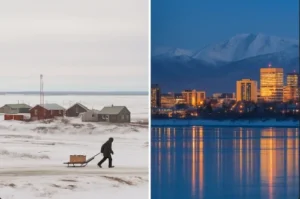Table of Contents
Visiting national parks is not just another travel experience; it’s an opportunity to connect with some of the last truly wild places on Earth. Here, you can witness the raw power of nature, from the dramatic shifts of glaciers to the serene beauty of untouched forests.
Whether you’re hiking through rugged terrain, spotting bears at Katmai, or cruising alongside whales in Glacier Bay, every moment spent while visiting is filled with wonder and excitement. Here is your guide to visiting Alaska National Parks.
How to Visit National Parks in Alaska?
They offer breathtaking views, diverse wildlife, and unique outdoor experiences. Here’s the best way to visit:
1. Choose Your Destinations:
Alaska is home to eight national parks, each offering distinct features and experiences. Here’s a quick overview:
- Denali: Home to North America’s highest peak, Denali, and abundant wildlife.
- Gates of the Arctic: A remote wilderness ideal for experienced adventurers.
- Glacier Bay: Known for its stunning glaciers and rich marine life.
- Katmai: Famous for bear viewing, particularly at Brooks Camp.
- Kenai Fjords: Offers incredible fjords and opportunities for whale watching.
- Kobuk Valley: Features unique dunes and caribou migrations.
- Lake Clark: Known for its pristine lakes and diverse ecosystems.
- Wrangell-St. Elias: The largest national park in the U.S., showcasing vast wilderness and mining history.
2. Plan Your Itinerary:
Given Alaska’s size, it’s essential to plan your itinerary carefully. Here’s a suggested outline for Flights and routes to Alaska’s parks:
- Days 1-3: Arrive in Anchorage, then travel to Denali National Park (5-6 hour drive).
- Days 4-6: Head to Wrangell-St. Elias National Park (6-7 hour drive from Denali).
- Days 7-9: Visit Kenai Fjords National Park (5.5-hour drive from Wrangell-St. Elias).
- Days 10-12: Explore Glacier Bay or Katmai, depending on your interests.
3. Transportation Options:
Getting around Alaska can be challenging but rewarding:
- By Car: Renting a car is ideal for visiting Denali and Wrangell-St. Elias, where road access is available.
- By Train: The Alaska Railroad offers scenic routes to Denali and beyond, providing a unique travel experience.
- By Plane: For remote parks like Gates of the Arctic, consider flying from Fairbanks or Anchorage.
4. Activities in Each Park:
Each park offers a variety of activities:
- Wildlife Viewing: Look for bears, moose, caribou, and more in their natural habitats.
- Hiking and Backpacking: Trails range from easy walks to challenging backcountry routes.
- Boat Tours: Explore coastal parks like Kenai Fjords and Glacier Bay by boat for stunning views of glaciers and marine wildlife.
Tips for Visiting Alaska’s Parks
Planning a trip to Alaska’s national parks is an exciting adventure. To make the most of your visit, consider these travel guidelines for Alaska wilderness:
1- Required Permits and Regulations:
- Permits: Many national parks require permits for camping, backcountry hiking, and other activities. Check specific park websites for detailed information and reservation requirements.
- Bear Safety: In areas with bear populations, it’s crucial to carry bear spray and follow bear safety guidelines.
- Wildlife Viewing: Observe wildlife from a safe distance and avoid disturbing their natural behavior.
- Trail Etiquette: Stay on designated trails to minimize impact on the environment.
2- Booking Accommodations:
- Camping: Many parks offer campgrounds with varying levels of amenities. Reservations are often required, especially during peak season.
- Lodges and Cabins: These provide comfortable accommodations, often with stunning views of the wilderness.
- Hotels and Motels: Available in larger towns and cities near park entrances.
Make Your Trip Memorable
You should visit the national parks of Alaska because they are a true testament to the raw beauty and untamed wilderness that define the Last Frontier. From the towering peaks of Denali to the glacial wonders of Wrangell-St. Elias, each park offers a unique adventure, where visitors can witness wildlife in its natural habitat and connect with nature in ways few places on Earth can match.












